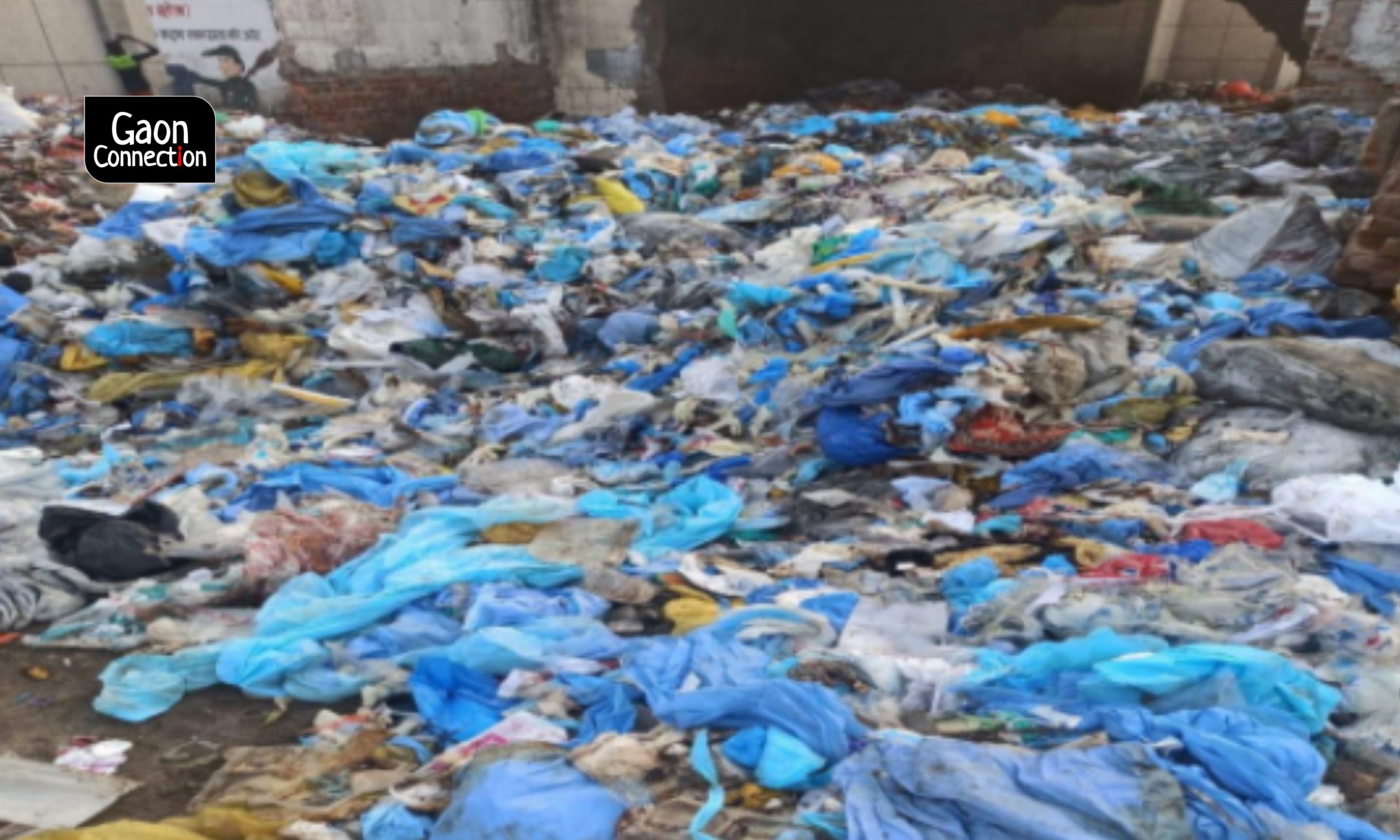CPCB guidelines and centralised waste treatment facilities help in better management of COVID19 waste in Delhi: Toxics Link study
Between March and September last year, Delhi generated 2,384 tonnes of COVID-19 waste. Despite a surge in such waste generation, its two high capacity centralised biomedical waste treatment facilities managed to handle the waste without getting overburdened.


Gloves, face masks, face shields, PPE kits, rapid testing kits — these are some of the highly infectious waste items that have multiplied manifold in the waste stream as the novel coronavirus disease (COVID-19) pandemic has spread across the country. In the national capital of New Delhi, at least 2,384 tonnes of COVID-19 waste was generated last year between March and September.
In March 2020, the city had 440 corona cases, which jumped to 3,515 cases in the next month. Simultaneously, the COVID-19 waste jumped from 33 tonnes in March month last year to 238 tonnes in April 2020. However, its two centralised biomedical waste management facilities have not been overwhelmed so far, and, along with the Central Pollution Control Board’s guidelines on COVID-19 waste, these facilities have helped in better management of such wastes in the national capital.
These are some of the key findings of a recent study titled ‘Covid Waste How has Delhi managed it?’ by New Delhi-based Toxics Link, which captures real-time data on the corona waste in the capital city.
COVID-19 waste in Delhi
According to the new report by Toxics Link, the COVID-19 waste continued to increase in New Delhi from May 2020 onwards and reached its highest peak of 511 tonnes (511,452 kgs) in July last year. This increase has been attributed to the fact that till July, the Common Biomedical Waste Treatment Facilities (CBWTF) were receiving corona waste mixed with the household wastes and the biomedical waste.
As the Delhi government supported home quarantine for people with mild to moderate COVID-19 symptoms, the amount of corona waste generated from homes increased. This led to the household waste getting mixed with the infectious corona waste, notes the study.
Source: Covid Waste How has Delhi managed it?, Toxics Link, New Delhi
It was only in the month of July 2020 that the Central Pollution Control Board (CPCB) issued the ‘Guidelines for Handling, Treatment and Disposal of Waste generated during Treatment/diagnosis/Quarantine of COVID-19 Patients’, which stressed on recycling of certain medical waste and less usage of disposable items. The CPCB also issued a mandate of the household waste including left over foods, cutlery, food packaging, that were not to be treated as yellow waste (incinerable) and be disposed of as general municipal waste. It also specified the items that were to be treated as COVID-19 waste.
These guidelines helped bring down the COVID-19 waste generation in the city. While the number of corona cases continues to rise in July and August months, the COVID-19 waste went down from 511 tonnes in July 2020, to 398 tonnes in the next month of August and 383 tonnes in September last year.
Decline in biomedical waste in Delhi
In its report, Toxics Link has also recorded how the biomedical waste (syringes, needles, bandages, blood bags, etc) generation pattern in the metropolis has changed due to the pandemic. The biomedical waste generated from all the healthcare facilities in Delhi is serviced by the two CBWTFs — SMS Water Grace, and Biotic Waste Ltd.
As per the recent study, due to the nationwide lockdown, the biomedical waste generation dropped and the city recorded a 40 per cent decline in such wastes between January and May last year.
The nationwide lockdown in March last year resulted in temporarily shutting down all non-essential hospital admissions, elective surgeries and follow up visits. This led to a continuous drop in biomedical waste during the peak COVID-19 months. The maximum drop was in the month of May 2020 when biomedical waste reduced by almost 40 per cent as compared to January last year.
Source: Covid Waste How has Delhi managed it?, Toxics Link, New Delhi
As the government announced the unlock strategies from June 2020, the regular biomedical waste also began to rise gradually in Delhi. As per the data received from the two CBWTFs in Delhi, the total biomedical waste generation in the first two months last year had only regular biomedical waste. However, the data from March 2020 to September 2020 shows both the regular biomedical waste and COVID-19 waste at the treatment facilities.
The total biomedical waste generation in the city peaked in July 2020 with 1,101 tonnes. This has been attributed to three major factors — increase in the number of corona positive cases, non-segregation of wastes, and resumption of normal activities.
According to the Toxics Link report, the huge capacity of the two centralised biomedical waste treatment facilities have helped Delhi tide over the rise in COVID-19 waste. For instance, when the corona waste peaked in the city in June last year, both these facilities were using only around 50-60 per cent of their total installed capacities.
Source: Covid Waste How has Delhi managed it?, Toxics Link, New Delhi
As per data collected from both the CBWTFs, a total of 6,027 tonnes of regular biomedical waste was generated in the city between January and September last year.

